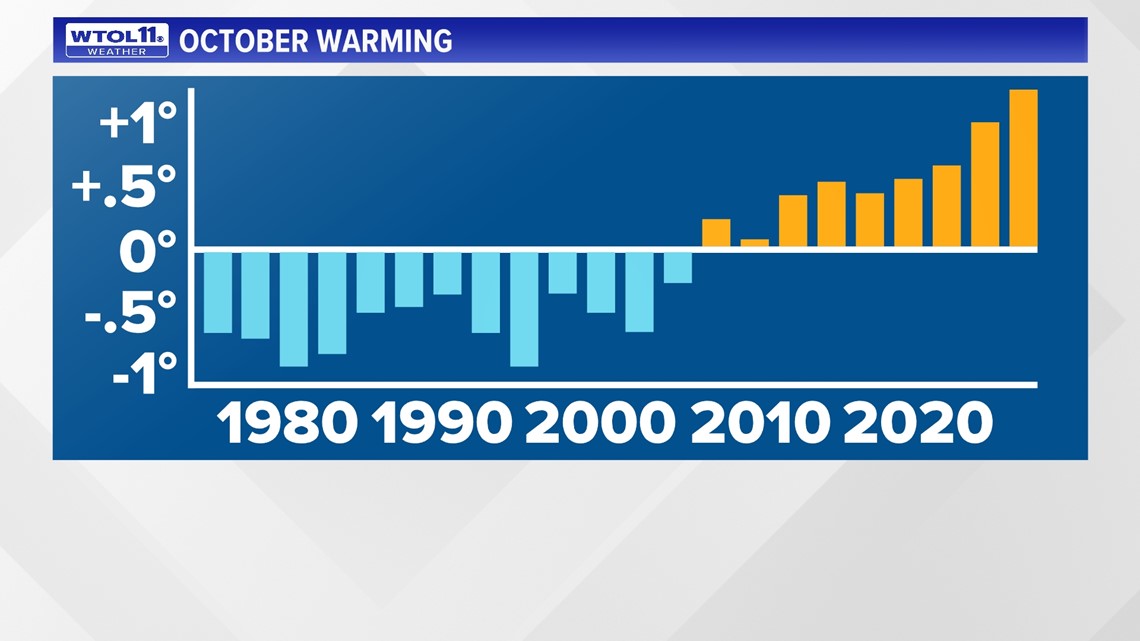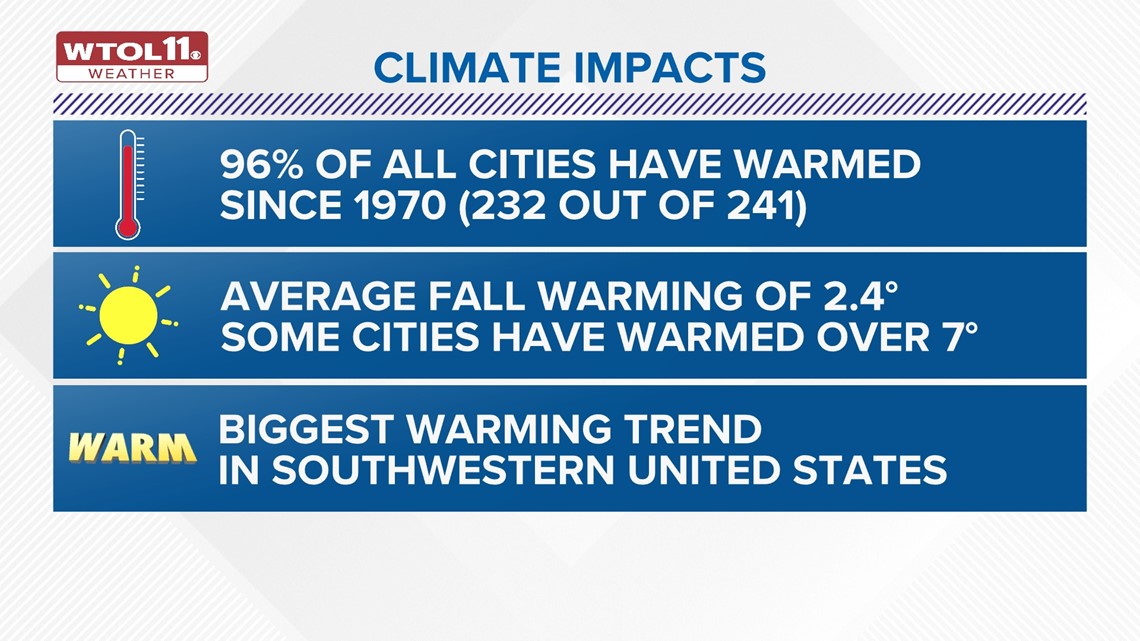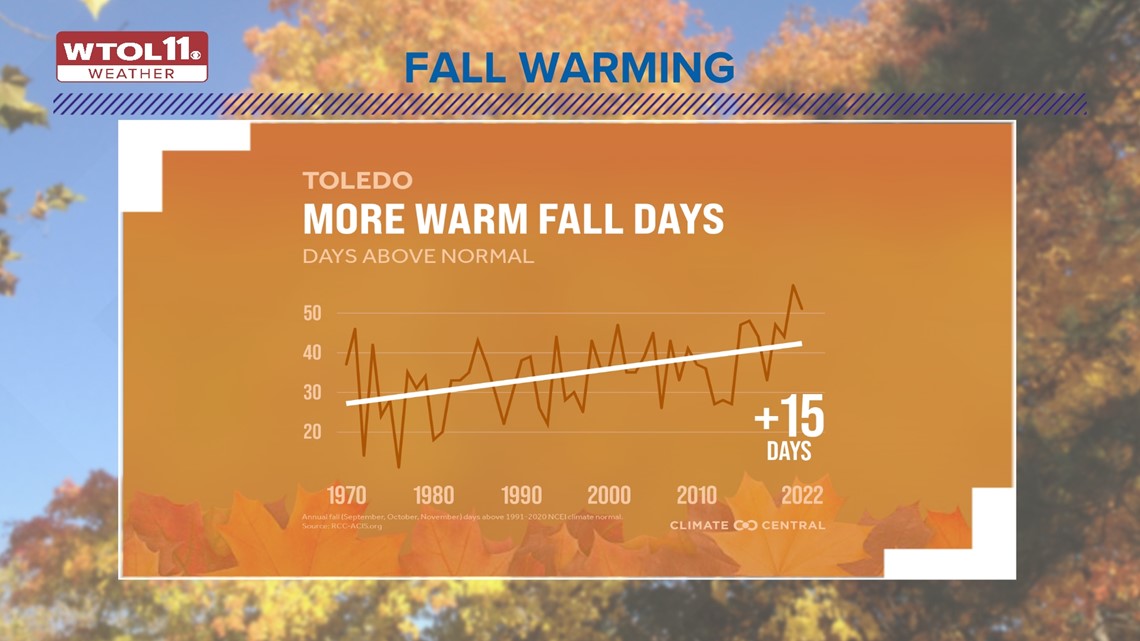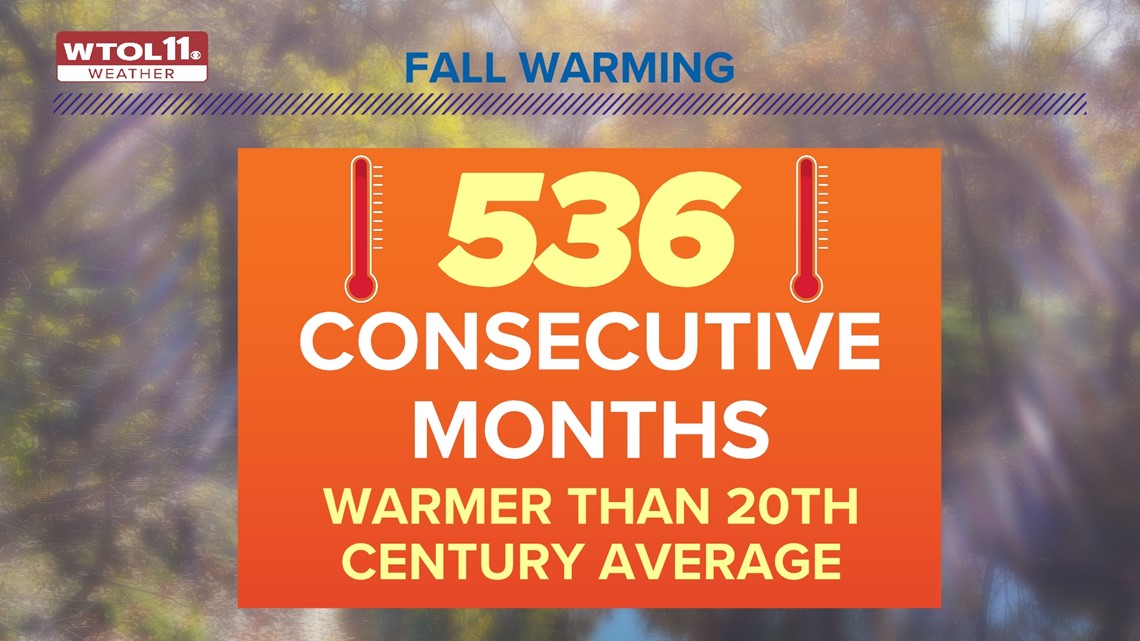TOLEDO, Ohio — After a chilly start to November, milder fall temperatures and brighter blue skies arrived this week. The WTOL 11 Weather Team is forecasting a significant warmup next week that will lift high temperatures back to the 60s.
What can you expect as we round the corner into mid November and how is climate change impacting autumn weather? Meteorologist John Burchfield answers those questions and more in this week's Climate Friday Newsletter.
First, let's look back on October, which exemplified the warming trend associated with climate change. In Toledo, the monthly mean temperature of 56 degrees was 1.4 degrees above average. Globally, October, 2023 was the warmest on record with an average temperature 1.7 degrees above the pre-industrial average, which is defined as the period from 1850-1900.
Weather records dating back to the late 19th century captured a snapshot of temperatures before the manmade emissions that skyrocketed during the Industrial Revolution. Temperatures have warmed up rapidly since then, exponentially rising over the last half century. This graph shows October temperatures globally since 1980.


While year-to-year variation due to the jet stream and weather patterns is evident, the warming trend has ramped up since the turn of the century. While fall warming has occurred across the globe, climate change has had the biggest impact on the southwestern United States, where temperatures have risen over 7 degrees in the last 50 years.
An analysis of data from 241 weather observation sites across the country shows that 96% (232 sites) have warmed up since 1970. The average American city has warmed up 2.4 degrees with the biggest changes in states such as Texas, Arizona, and Nevada. Of all the studied cities in the United States, Reno, Nevada has warmed up by the most during the fall season, climbing a whopping 7.7 degrees in the last half century.


While Toledo, northwest Ohio, and southeast Michigan haven't seen quite that magnitude of temperature increase, local areas still have experienced a sizeable warmup. Not only is the magnitude of fall warmth increasing, but so is the frequency. Compared to 1970, Toledo now experiences 15 more above average days during the autumn season. This uptick in temperatures associated with global warming will continue in the future.


The upcoming weather forecast fits the theme of this week's Climate Friday, and warmer weather is expected into the middle of November. After a chilly but sunny start to the weekend, warmer weather will arrive for the middle to latter half of next week. Temperatures will surge to the 60s as a ridge in the jet stream ushers in a mild feel for much of the eastern United States. This map shows the mid November temperature trend, which features a warming trend for the entire Great Lakes, Midwest, and East Coast regions.


Warm is relative, however, and our normal high temperature has dropped to 54 degrees, meaning highs near 60 degrees are considered mild. By Thanksgiving, our average high temperature will be down to 48, so enjoy the mild feel while it's here.
How will November pan out when all is said and done? Time will tell, but based on the latest extended outlook from the WTOL 11 Weather team, Temperatures will likely remain above average through the middle to latter half of the month.
November, 2022 marked the 46th consecutive above average November globally, and this month will likely add to the tally as number 47. The number of consecutive months above the 20th century global average has risen to a whopping 536, reflecting almost 45 consecutive years of above average temperatures for the planet. This number will also continue to rise as climate change makes warm weather becomes more frequent and extreme.


Though this weekend will bring cooler conditions with high temperatures near 50, you'll see some much milder days next week in the WTOL 11 10-day forecast. Stay tuned to next week's Climate Friday as Meteorologist John Burchfield prepares you for Thanksgiving and the rest of November.
MORE FROM CLIMATE FRIDAY ON WTOL 11

